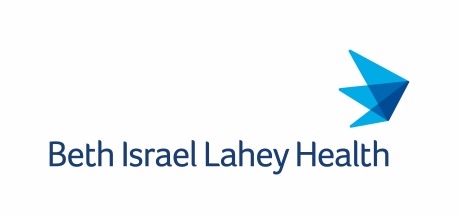Newswise — BOSTON – Researchers from Beth Israel Deaconess Medical Center’s Neonatal Intensive Care Unit (NICU), the Wyss Institute for Biologically Inspired Engineering at Harvard University and the University of Massachusetts Medical School have found that a vibration-based therapy known as stochastic resonance (SR) stimulation can successfully treat preterm infants experiencing apnea of prematurity (AOP), disrupted breathing, bradycardia (slowed heart rate) and oxygen desaturation (diminished oxygen levels). Reported online today in Pediatrics, the results show that infants’ apnea events decreased by half when babies were placed on specially developed SR mattresses for alternating 30-minute intervals over the course of three to four hours.
“This simple intervention made a huge difference,” said the study’s corresponding author Vincent C. Smith, MD, Associate Director of the NICU at BIDMC and Assistant Professor of Pediatrics at Harvard Medical School. “When we replaced infants’ regular mattresses with SR mattresses -- which provided a very gentle, soothing vibration like a very light massage -- babies’ apnea episodes decreased by 50 percent, and we improved every clinically significant aspect of oxygen desaturation events and decreased the severity of bradycardia events.”
The nervous systems of preterm infants, born earlier than 37 weeks gestation, are functionally underdeveloped. Many preterm infants, especially those who are born at 34 weeks or less, experience periods of apnea in which they briefly stop breathing or do not breathe deeply enough. These infants may also have reduced oxygen levels and slowed heart rates. To manage these symptoms, NICU clinicians frequently treat preterm infants with caffeine and/or respiratory support such as mechanical ventilation or continuous positive airway pressure (CPAP). “While these treatments are effective and widely used, they do not completely resolve the problems,” Smith said.
The study’s senior author David Paydarfar, MD, a neurologist at UMass Medical School and associate faculty member at the Wyss Institute developed the SR stimulation device more than a decade ago. In an earlier pilot study, Paydarfar showed that adding “noise” in the form of a subtle vibration helps stabilize infants’ breathing without waking them. With a team of engineers at the Wyss Institute, he then developed the SR stimulation device used in the current study.
“SR has been used to stabilize other biological systems and has been examined in previous medical applications – such as improving balance in elderly individuals -- with significant success,” said Paydarfar. ”We developed this specialized SR mattress to provide neonatologists with a noninvasive alternative to existing therapies to help preterm babies.”
The researchers studied 36 preterm infants in the BIDMC NICU between April 2012 and July 2014. The infants were receiving ventilation support and had experienced at least one clinical documented apnea, bradycardia or oxygen desaturation event. The researchers replaced standard mattresses with SR mattresses in the infants’ cribs or isolettes. Babies received alternating 30-minute intervals of SR stimulation “on” and SR stimulation “off” over the course of several three- or four-hour study sessions. The research team simultaneously recorded the infant’s heart rate, respiratory rate and oxygen saturation from the standard clinical monitors.
To compare the effects of SR stimulation on each infant, the researchers used a randomized crossover study design, in which each baby serves as his or her own control. “We didn’t compare infants to each other, we only compared them to themselves,” said Smith. “That way you’re really accounting for everything including the use of oxygen, caffeine, and other therapies whether the baby is or is not receiving the mattress stimulation.
“We could see right away that the SR stimulation was successful,” said Smith. “These results provide us with proof-of-concept that SR stimulation may be a safe, noninvasive supplemental treatment option to help preterm infants.” Study coauthors include Damian Kelty-Stephen, PhD, of Grinnell College; Mona Qureshi Ahmad, BS, of BIDMC and the Wyss Institute; Wenyang Mao, MS, of BIDMC; Kelly Cakert, BS, of BIDMC and Wyss Institute; and John Osborne, MS, of the Wyss Institute.
This project was conducted with support from Harvard Catalyst/The Harvard Clinical and Translational Science Center, National Institutes of Health award UL1 RR 025758 as well as NIH R01 GM 104987 and support from the National Science Foundation and the Wyss Institute.
About Beth Israel Deaconess Medical Center
Beth Israel Deaconess Medical Center is a patient care, teaching and research affiliate of Harvard Medical School and consistently ranks as a national leader among independent hospitals in National Institutes of Health funding.
BIDMC is in the community with Beth Israel Deaconess Hospital-Milton, Beth Israel Deaconess Hospital-Needham, Beth Israel Deaconess Hospital-Plymouth, Anna Jaques Hospital, Cambridge Health Alliance, Lawrence General Hospital, Signature Healthcare, Beth Israel Deaconess HealthCare, Community Care Alliance and Atrius Health. BIDMC is also clinically affiliated with the Joslin Diabetes Center and Hebrew Rehabilitation Center and is a research partner of Dana-Farber/Harvard Cancer Center and the Jackson Laboratory. BIDMC is the official hospital of the Boston Red Sox. For more information, visit www.bidmc.org.
About the University of Massachusetts Medical School
The University of Massachusetts Medical School, one of the fastest growing academic health centers in the country, has built a reputation as a world-class research institution, consistently producing noteworthy advances in clinical and basic research. The Medical School attracts more than $249 million in research funding annually, 80 percent of which comes from federal funding sources. The mission of the Medical School is to advance the health and well-being of the people of the commonwealth and the world through pioneering education, research, public service and health care delivery with its clinical partner, UMass Memorial Health Care. For more information, visit www.umassmed.edu.
